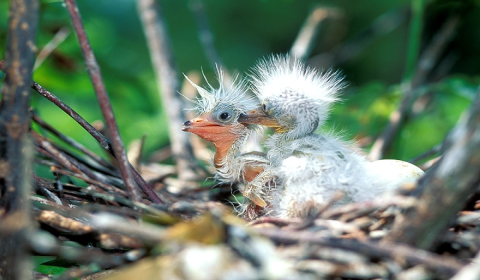Updated October 2, 2024
ALERTS:
- RIVER UNITS UNDERGOING CHEMICAL TREATMENT: Starting 10/1 contractors will be in La Barranca, Rio Vista, Pine Creek and Drumheller to spray chemical treatment on previously masticated areas. The impacted areas will be 25 feet off each side of the access roads. The initial phase (mastication) was to create fuel breaks along our already existing road system. By treating the mastication, this will ensure these fuel breaks are longer lasting, making the landscape more resilient to large wildfires on refuge lands.
- HUNTING INFORMATION: All of our hunting information for Sacramento, Delevan, Colusa and Sutter NWRs has been consolidated into two pages (Sacramento River hunting information can be found on RIVER-Hunting):
- Hunting (includes Updates for 2024-2025)
- Hunting: Junior, Mobility & Special Hunts
Please consider reviewing all the information on these pages before calling the refuge with questions - you'll likely find the answers you're looking for on one of these pages!
Visit Us
Welcome to Sacramento National Wildlife Refuge!
Sacramento National Wildlife is one of the 5 National Wildlife Refuges and 3 Wildlife Management Areas that make up the Sacramento National Wildlife Refuge Complex: Sacramento NWR, Delevan NWR, Colusa NWR, Sutter NWR, Sacramento River NWR, Llano Seco Unit (STNCV WMA), Butte Sink WMA, Willow Creek-Lurline WMA.
There are LOTS of recreational opportunities across the Complex, including a Visitor Center, Auto Tours, trails, bicycling, photography, hunting and environmental education.
Click on VISIT US! to find all the information you need to plan your visit! Or use these quick links:
VISITOR CENTERAUTO TOURSTRAILSBICYCLINGPHOTOGRAPHYHUNTING-WATERFOWLHunting-RiverMAPS, DIRECTIONS + BROCHURESENVIRONMENTAL EDUCATION
Location and Contact Information
About Us
The Sacramento National Wildlife Refuge is located about 70 miles north of the metropolitan area of Sacramento and 7 miles south of the town of Willows in Glenn and Colusa Counties. The refuge consists of 10,819 acres of wetlands, grasslands and riparian riparian
Definition of riparian habitat or riparian areas.
Learn more about riparian habitats.
Click on the link below to learn more about us!
What We Do
- Resource Management
To help plants and wildlife, Refuge staff uses a variety of habitat management techniques to maintain, recover or enhance plant and wildlife values. Refuge staff carefully consider any management techniques and employ them in varying degrees according to the situation.
- Conservation and Partnerships
The Complex is involved in many conservation endeavors, including Comprehensive Conservation Plans, Private Landowner Programs, and the National Wildlife Refuge System Improvement Act.
Click on the link below to learn more about what we do!
Our Organization
National Wildlife Refuge System Improvement Act of 1997:The NWRS Improvement Act defines a unifying mission for all refuges, including a process for determining compatible uses on refuges, and requiring that each refuge be managed according to a CCP. The NWRS Improvement Act expressly states that wildlife conservation is the priority of System lands and that the Secretary shall ensure that the biological integrity, diversity, and environmental health of refuge lands are maintained. Each refuge must be managed to fulfill the specific purposes for which the refuge was established and the System mission. The first priority of each refuge is to conserve, manage, and if needed, restore fish and wildlife populations and habitats according to its purpose.
Our Species
Sacramento National Wildlife Refuge is best known for migratory waterfowl. Waterfowl are present September through April and numbers regularly peak at over 500,000 ducks and 250,000 geese. Sacramento NWR is an important wintering grounds for Tule Greater White-fronted Geese. The Sacramento National Wildlife Refuge Complex provides nearly 70,000 acres of wetland, grassland, and riparian riparian
Definition of riparian habitat or riparian areas.
Learn more about riparian habitats for a wide array of waterfowl, shorebirds, raptors, waterbirds, songbirds, reptiles, and mammals. The Complex currently supports nearly 300 species of birds.
Click on the link below to learn more about our Seasons of Wildlife, Wildlife Checklist, Wildlife Surveys, and Our Species....






